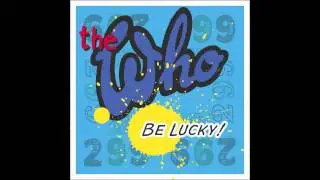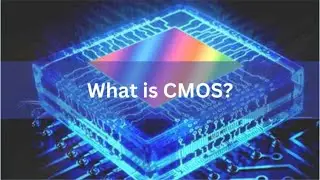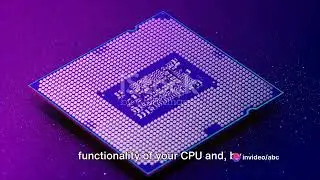"Ultimate Overview of different frameworks and technologies used in web applications development" #1
Web application development involves a variety of frameworks and technologies that provide solutions for different aspects of building dynamic and interactive web applications. Here's an overview of some of the most commonly used frameworks and technologies in web development:
Frontend Technologies:
HTML (HyperText Markup Language):
Standard markup language for creating web pages and web applications.
CSS (Cascading Style Sheets):
Style sheet language used to define the presentation and layout of HTML documents.
JavaScript:
High-level programming language used for adding interactivity and dynamic behavior to web pages.
Frameworks/libraries: React.js, Angular, Vue.js, jQuery.
Responsive Web Design (RWD):
Approach to designing web pages that adapt to various devices and screen sizes.
Frameworks: Bootstrap, Foundation, Materialize CSS.
Web Components:
A set of web platform APIs that allow for the creation of reusable custom elements with encapsulated functionality.
Libraries: Polymer, LitElement, Stencil.js.
Progressive Web Apps (PWAs):
Web applications that provide a native app-like experience with features like offline support, push notifications, and installation.
Frameworks: Workbox, PWACompat, PWABuilder.
Backend Technologies:
Server-Side Scripting Languages:
Languages executed on the server to generate dynamic content for web pages.
Examples: Java (Servlets, JSP), Python (Django, Flask), Ruby (Ruby on Rails), PHP (Laravel, Symfony), Node.js (Express.js).
Web Servers:
Software responsible for serving web content to clients.
Examples: Apache HTTP Server, Nginx, Microsoft IIS, Tomcat.
Database Management Systems (DBMS):
Software for managing databases and storing/retrieving data.
Examples: MySQL, PostgreSQL, MongoDB, SQLite, Oracle.
APIs (Application Programming Interfaces):
Interfaces that define interactions between different software applications.
Examples: RESTful APIs, GraphQL.
ORM (Object-Relational Mapping) Libraries:
Libraries that simplify database interactions by mapping database tables to object-oriented models.
Examples: Hibernate (Java), SQLAlchemy (Python), ActiveRecord (Ruby).
Authentication and Authorization:
Mechanisms for verifying the identity of users and controlling access to resources.
Examples: OAuth, JWT (JSON Web Tokens), OAuth2.
Full-Stack Frameworks:
Spring Boot (Java):
Simplifies the development of production-ready Spring applications with built-in features and auto-configuration.
Django (Python):
High-level web framework for rapid development and clean design, emphasizing DRY (Don't Repeat Yourself) principles.
Ruby on Rails (Ruby):
Opinionated framework that emphasizes convention over configuration and follows the MVC architecture pattern.
Laravel (PHP):
Modern PHP framework that provides expressive syntax, elegant features, and developer-friendly tools.
Deployment and Infrastructure:
Containerization:
Technology for packaging and deploying applications with their dependencies in isolated environments.
Examples: Docker, Kubernetes.
Cloud Platforms:
Services for hosting, deploying, and scaling web applications in the cloud.
Examples: Amazon Web Services (AWS), Microsoft Azure, Google Cloud Platform (GCP).
Continuous Integration/Continuous Deployment (CI/CD):
Practices and tools for automating the building, testing, and deployment of applications.
Examples: Jenkins, Travis CI, CircleCI.
Serverless Computing:
Cloud computing model where cloud providers dynamically manage the allocation of machine resources.
Examples: AWS Lambda, Azure Functions, Google Cloud Functions.
Development Tools:
Version Control Systems (VCS):
Software for tracking and managing changes to source code over time.
Examples: Git, Subversion (SVN), Mercurial.
Integrated Development Environments (IDEs):
Software applications that provide comprehensive facilities for software development.
Examples: Visual Studio Code, IntelliJ IDEA, Eclipse.
Package Managers:
Tools for managing dependencies and packages required by software projects.
Examples: npm (Node.js), pip (Python), Composer (PHP), Maven (Java).
Languages:
HTML: The foundational markup language for creating web pages.
CSS: The language used to style HTML elements.
JavaScript: A versatile programming language for adding interactivity to web applications.
Frameworks and Libraries:
React: A JavaScript library developed by Facebook for building user interfaces with a component-based approach.
Angular: A comprehensive framework by Google for building dynamic single-page applications (SPAs).
Vue.js: A progressive framework that allows incremental adoption for building interactive user interfaces.
Svelte: A relatively new framework that compiles components to highly optimized vanilla JavaScript.
Ember.js: A framework with strong conventions, designed for ambitious web applications
State Management:
Redux: A state management library commonly used with React
MobX: An alternative state management library
Vuex: The state management solution for Vue.js
#include #java



















